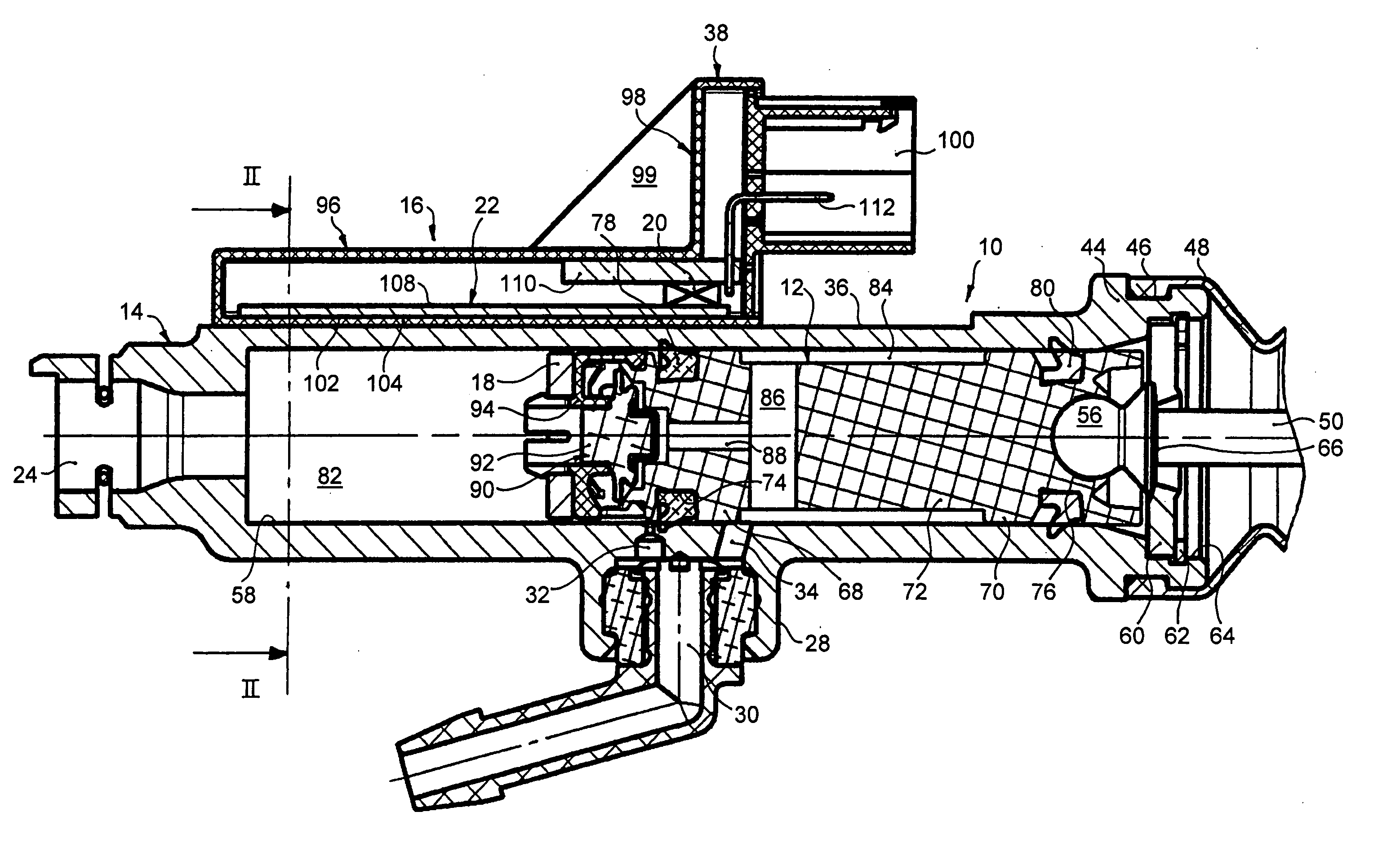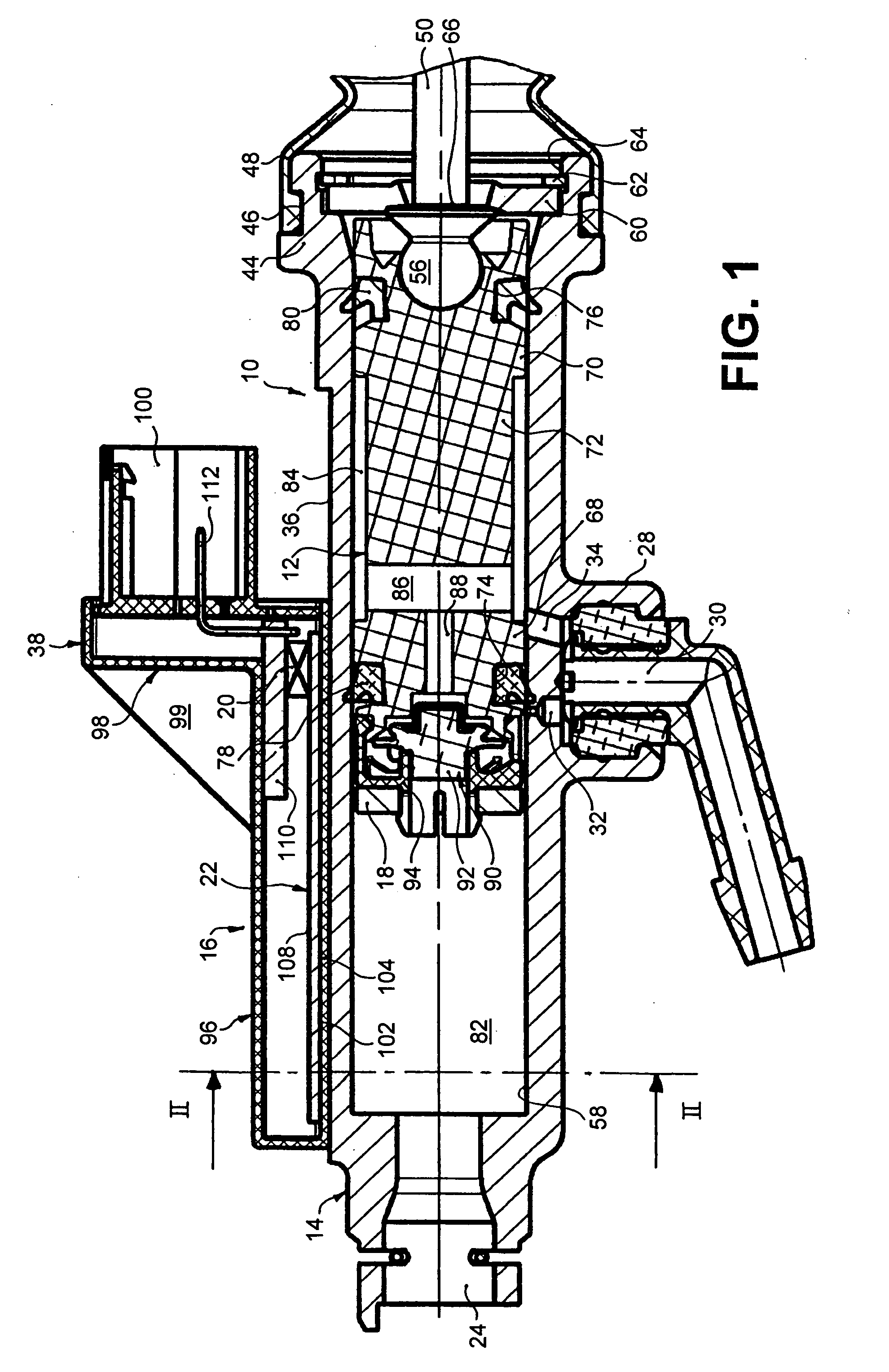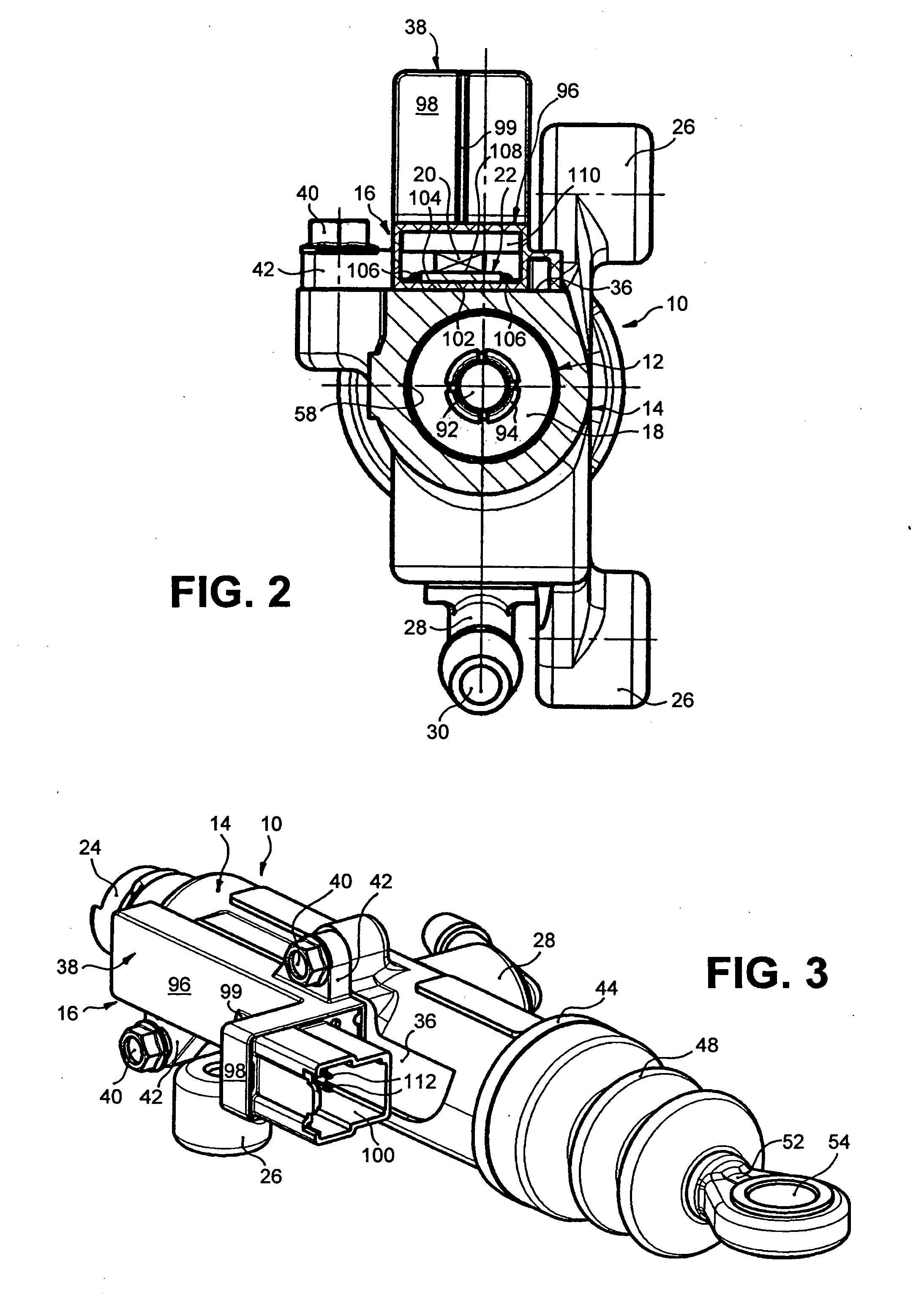Device for sensing the axial position, in relation to the other component, of one of two components mobile relative to each other
a technology of axial position and sensor, which is applied in the direction of magnetic measurement, galvano-magnetic hall-effect devices, magnetic field measurement using galvano-magnetic devices, etc., can solve the problems of unfavorable radial installation space, undesirable enlargement of the total cylinder length, and high friction, so as to minimize the radial installation space required for the sensor device, the effect of commercially available relatively cheaply
- Summary
- Abstract
- Description
- Claims
- Application Information
AI Technical Summary
Benefits of technology
Problems solved by technology
Method used
Image
Examples
Embodiment Construction
[0040] FIGS. 1 to 3 show as examples of a possible application of the present invention a master cylinder 10 for a hydraulic clutch control for motor vehicles which here has a piston 12, shown in its base position, which is held longitudinally mobile in a cylinder housing 14. 16 indicates generally a sensor device to sense the axial position of the piston 12 in relation to the cylinder housing 14, which has here arranged on the piston 12 a magnetic signal element in the form of an annular permanent magnet known as a ring magnet 18, and arranged on the cylinder housing 14 a magnetic-flux-sensitive sensor in the form of a Hall sensor 20, by means of which the axial relative position of the ring magnet 18 to the Hall sensor 20 can be detected in a manner to be described. As will also be described below, it is essential inter alia that at least one flux guide element 22, stationary in relation to the Hall sensor 20, is allocated to the Hall sensor 20 and extends on the cylinder housing ...
PUM
 Login to View More
Login to View More Abstract
Description
Claims
Application Information
 Login to View More
Login to View More - R&D
- Intellectual Property
- Life Sciences
- Materials
- Tech Scout
- Unparalleled Data Quality
- Higher Quality Content
- 60% Fewer Hallucinations
Browse by: Latest US Patents, China's latest patents, Technical Efficacy Thesaurus, Application Domain, Technology Topic, Popular Technical Reports.
© 2025 PatSnap. All rights reserved.Legal|Privacy policy|Modern Slavery Act Transparency Statement|Sitemap|About US| Contact US: help@patsnap.com



